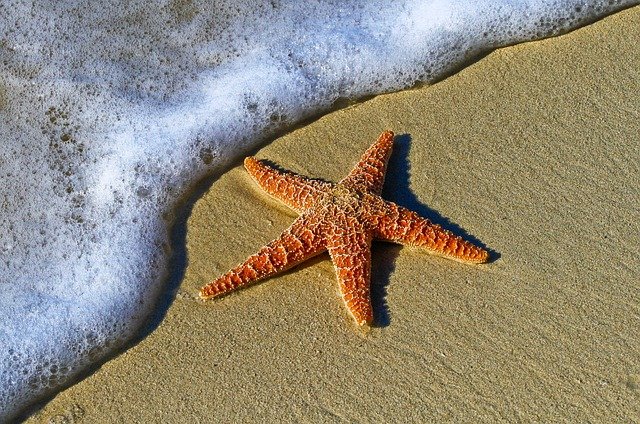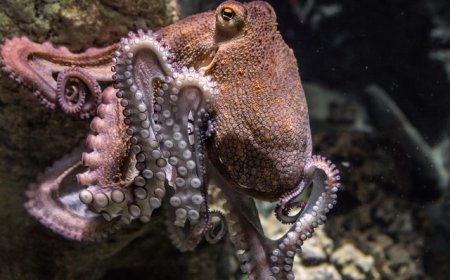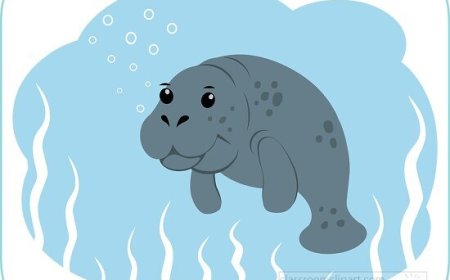All About Sea Stars: Regenerating Wonders of the Ocean
Explore sea stars for kids. Learn how starfish regrow arms, where they live, and fun ocean facts about these unique animals.

⭐ Sea Stars: Regenerating Wonders of the Ocean
Sea stars—often called starfish—are some of the most recognizable and fascinating animals in the ocean. Even though they look like fish, they’re actually echinoderms, a group of marine animals with radial symmetry and no backbone.
Sea stars come in many shapes, sizes, and colors. Some have five arms, while others may have dozens. With their slow but steady movement, ability to regrow lost limbs, and strange way of eating, sea stars are full of surprises.
🌍 Habitat and Distribution
Sea stars live in oceans all over the world, from the shallow intertidal zones to the deep sea. They are commonly found in:
- Tide pools
- Rocky shores
- Coral reefs
- Seagrass beds
- Sandy or muddy sea floors
There are over 2,000 species of sea stars, and they are especially common in Pacific and Atlantic coastal waters.
🔷 Body Structure and Movement
Sea stars have a unique body plan:
- Radial symmetry – usually five arms arranged around a central disc
- No brain or heart, but a nerve ring and water vascular system
- Tube feet under each arm, used for moving and grabbing
- A tough, spiny outer skin for protection
They move using hundreds of tiny tube feet powered by a hydraulic (water-based) system. These feet help them crawl along rocks, sand, and coral. They move slowly—but can be surprisingly strong.
🍽️ How Sea Stars Eat
Sea stars are carnivores and scavengers, feeding mostly on:
- Clams and mussels
- Snails
- Coral polyps
- Dead animals and detritus
Here’s the coolest part: they eat in a way almost no other animal does:
- They pry open a clam’s shell with their arms and tube feet
- Then they eject their stomachs out of their bodies and into the shell
- They digest the food outside their bodies, then pull the stomach back in!
This lets them eat prey that would otherwise be protected inside hard shells.
🔁 Regeneration and Defense
Sea stars are famous for their ability to regrow arms. If a predator bites off one arm, the sea star can:
- Regrow it in a few months or years, depending on the species and environment
- In some species, an entire sea star can regrow from just one arm and part of the central body!
This ability helps them survive in tough environments with predators like fish, sea otters, and crabs. They also use camouflage, tough skin, and spines to avoid being eaten.
🐣 Reproduction and Life Cycle
Sea stars can reproduce in two ways:
- Sexual reproduction – Males and females release sperm and eggs into the water
- Asexual reproduction – Some can regrow from a single arm or divide into two animals
After fertilization, the sea star goes through a larval stage, which floats in the water before settling on the sea floor and transforming into a juvenile.
Sea stars grow slowly and can live up to 35 years, depending on the species.
⚠️ Threats and Conservation
Sea stars are important members of the ocean ecosystem, but many face threats:
- Pollution, especially oil spills and plastic waste
- Climate change, which affects ocean temperature and water chemistry
- Diseases, like sea star wasting syndrome, which causes arms to fall off and animals to die
- Habitat destruction from coastal development and fishing gear
🛡️ Conservation:
- Marine protected areas
- Research on sea star disease outbreaks
- Cleaner oceans through pollution reduction
- Education and tide pool protection efforts
Sea stars are a vital part of the food chain and help keep mussel and barnacle populations in balance.
🎉 Fun Facts About Sea Stars
- Sea stars don’t have blood—they use seawater to move nutrients
- Their eyes are at the tips of their arms
- Some species can have up to 40 arms!
- Sea stars can change color to blend in with their surroundings
- Their tube feet have suction power and can open clam shells
🧠 Vocabulary List
- Echinoderm – A marine animal with radial symmetry, like sea stars and sea urchins
- Radial symmetry – Body parts arranged in a circle around a central point
- Tube feet – Small suction-cup structures used for movement and grabbing
- Larva – A young stage of life that looks very different from the adult
- Regeneration – The ability to regrow lost body parts
- Scavenger – An animal that eats dead or decaying matter
- Water vascular system – A network of water-filled tubes used for movement
- Wasting syndrome – A disease that affects sea stars, causing them to disintegrate
- Camouflage – Blending in with the environment
- Detritus – Bits of dead animals, plants, or waste used as food
✅ Sea Star Quiz: How Bright Is Your Star Power?
- What kind of symmetry do sea stars have?
A. Bilateral B. Spiral C. Radial D. Asymmetrical
Answer: C. Radial - What special power do sea stars have?
A. Flying B. Changing shape C. Regrowing arms D. Shooting ink
Answer: C. Regrowing arms - Where are sea stars' eyes located?
A. On their belly B. On their back C. At the tip of each arm D. In their mouth
Answer: C. At the tip of each arm - How do sea stars eat clams and mussels?
A. Bite through the shell B. Drill holes C. Spit acid D. Evert their stomachs into the shell
Answer: D. Evert their stomachs into the shell - What group of animals do sea stars belong to?
A. Mollusks B. Fish C. Echinoderms D. Crustaceans
Answer: C. Echinoderms
🧒 Kid-Friendly Summary
Sea stars are not fish—they’re echinoderms! These awesome ocean creatures have five or more arms, tiny tube feet, and the power to regrow lost limbs. Some even turn their stomachs inside out to eat clams!
They help keep the ocean healthy by cleaning up and keeping prey like mussels in check. But sea stars face problems from pollution and disease, so it’s important we keep their ocean homes clean and safe.



















































